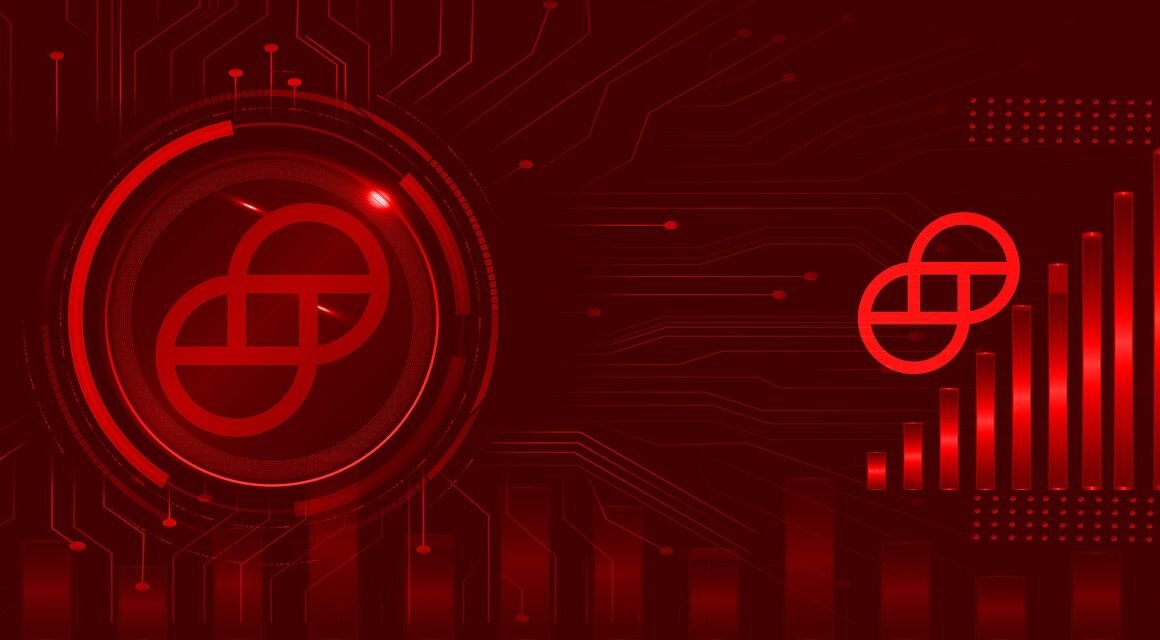Cryptocurrencies like Bitcoin and Ethereum have revolutionized the financial landscape, but their growing popularity has exposed limitations in scalability. Transactions can be slow and expensive, hindering wider adoption. This is where Layer 2 solutions come in, offering innovative ways to boost transaction speed and reduce costs without compromising security. In this guide, we’ll dive deep into the world of Layer 2 scaling, exploring its benefits, types, and real-world applications.
Understanding Layer 2 Scaling Solutions
What are Layer 2 Solutions?
Layer 2 solutions are protocols built on top of an existing blockchain (Layer 1), such as Bitcoin or Ethereum, to improve transaction throughput and reduce fees. Instead of processing every transaction directly on the main chain, Layer 2 solutions handle transactions off-chain, and then periodically settle the final results on the Layer 1 blockchain. This approach allows for faster and cheaper transactions while still benefiting from the security and decentralization of the underlying Layer 1 network.
Why are Layer 2 Solutions Needed?
Layer 1 blockchains often face scalability challenges due to their consensus mechanisms and block size limitations. For instance, Bitcoin can process around 7 transactions per second (TPS), and Ethereum can handle approximately 15-30 TPS. As network usage increases, transaction fees rise, and confirmation times lengthen. Layer 2 solutions are essential for addressing these issues and enabling blockchains to support a larger volume of transactions efficiently.
- Scalability: Layer 2 solutions significantly increase the number of transactions a blockchain can handle.
- Reduced Fees: By processing transactions off-chain, users pay lower transaction fees.
- Faster Transactions: Confirmation times are much quicker compared to Layer 1 transactions.
- Improved User Experience: Lower fees and faster speeds lead to a better overall user experience.
Types of Layer 2 Scaling Solutions
State Channels
State channels enable parties to transact directly with each other off-chain for multiple transactions. Only the opening and closing states of the channel are recorded on the main blockchain. This significantly reduces the load on the Layer 1 network.
- How it works: Participants lock funds into a smart contract on the main chain, creating a channel. They can then exchange transactions off-chain, updating their balances within the channel. Once they are done, they close the channel, and the final balances are written back to the main chain.
- Examples:
Lightning Network (Bitcoin): Enables fast and cheap Bitcoin transactions.
Raiden Network (Ethereum): A similar concept designed for Ethereum.
- Benefits: High transaction speed, low fees, and enhanced privacy.
- Limitations: Requires participants to be online and cooperative for the channel to function correctly.
Sidechains
Sidechains are independent blockchains that run parallel to the main chain. They have their own consensus mechanisms and can be optimized for specific use cases. A bridge connects the sidechain to the main chain, allowing assets to be transferred between the two.
- How it works: Users can transfer assets from the main chain to the sidechain via a bridge. On the sidechain, they can transact with these assets using the sidechain’s rules. When they are finished, they can transfer the assets back to the main chain.
- Examples:
Polygon (Matic): A popular sidechain for Ethereum that offers faster and cheaper transactions.
Liquid Network (Bitcoin): A sidechain designed for Bitcoin trading and settlements.
- Benefits: Increased transaction throughput, customizable consensus mechanisms, and support for different types of assets.
- Limitations: Sidechains have their own security risks, and the security of the bridge is crucial to prevent attacks.
Rollups
Rollups bundle multiple transactions into a single batch and submit them to the Layer 1 blockchain as one transaction. This reduces the amount of data that needs to be processed on the main chain, leading to increased scalability.
- Types of Rollups:
Optimistic Rollups: Assume that transactions are valid unless proven otherwise. Fraud proofs are used to challenge invalid transactions. They generally have longer withdrawal times because of the challenge period.
Zero-Knowledge Rollups (ZK-Rollups): Use cryptographic proofs (SNARKs or STARKs) to verify the validity of transactions. They offer faster confirmation times and stronger security guarantees.
- How it works: Transactions are executed off-chain, and the transaction data is compressed and submitted to the main chain. For Optimistic Rollups, a challenge period allows anyone to submit a fraud proof if they believe a transaction is invalid. For ZK-Rollups, a cryptographic proof of validity is submitted along with the transaction data.
- Examples:
Arbitrum (Optimistic Rollup): Provides compatibility with Ethereum smart contracts.
Optimism (Optimistic Rollup): Focuses on simplicity and EVM compatibility.
zkSync (ZK-Rollup): Employs zero-knowledge technology for secure and scalable payments.
StarkNet (ZK-Rollup): Uses STARKs for highly scalable and secure decentralized applications.
- Benefits: Significant scalability improvements, reduced fees, and strong security guarantees (especially for ZK-Rollups).
- Limitations: Optimistic Rollups have longer withdrawal times due to the challenge period. ZK-Rollups can be more complex to implement.
Validium
Validium is similar to ZK-Rollups in that it uses zero-knowledge proofs for transaction validity. However, unlike ZK-Rollups, Validium stores transaction data off-chain, which can further reduce costs and improve scalability.
- How it works: Transactions are processed off-chain, and a validity proof is submitted to the main chain. The transaction data is stored by a data availability committee, ensuring that it is available if needed.
- Examples:
StarkWare Validium: Offers scalable and secure data availability solutions for enterprise use cases.
Immutable X: A Validium-based solution for NFTs on Ethereum.
- Benefits: High scalability, low fees, and strong security guarantees.
- Limitations: Relies on a trusted data availability committee, which can introduce centralization risks if not designed carefully.
Practical Examples and Use Cases
Decentralized Exchanges (DEXs)
Layer 2 solutions are crucial for improving the performance of decentralized exchanges (DEXs). By using Layer 2 scaling, DEXs can offer faster order execution, lower trading fees, and a better overall trading experience. Examples include:
- Loopring (ZK-Rollup): Enables high-performance trading on Ethereum with low fees.
- dYdX (StarkWare): A decentralized derivatives exchange that uses StarkWare’s technology to offer high leverage and low fees.
NFT Marketplaces
NFT marketplaces often suffer from high transaction fees on Layer 1 blockchains. Layer 2 solutions can significantly reduce these fees, making it more affordable for users to buy, sell, and trade NFTs. Examples include:
- Immutable X (Validium): Provides a scalable and gas-free solution for NFT trading on Ethereum.
- Zora (Optimistic Rollup): Allows creators to mint and sell NFTs with lower fees and faster transactions.
Gaming
Blockchain-based games often require frequent transactions, such as in-game purchases and asset transfers. Layer 2 solutions can enable these games to scale effectively and provide a seamless gaming experience. Examples include:
- Cartesi (Optimistic Rollup): Brings Linux runtime to blockchains, enabling more complex game logic and scalability.
- Ronin Network (Sidechain): Designed specifically for the Axie Infinity game, offering fast and cheap transactions for in-game assets.
Choosing the Right Layer 2 Solution
Factors to Consider
Selecting the appropriate Layer 2 solution depends on the specific requirements of your application. Here are some factors to consider:
- Security: How secure is the Layer 2 solution? Does it rely on trusted parties or use cryptographic proofs?
- Scalability: How much does the Layer 2 solution improve transaction throughput?
- Cost: What are the transaction fees on the Layer 2 solution?
- EVM Compatibility: Does the Layer 2 solution support Ethereum Virtual Machine (EVM) compatibility for easy integration with existing smart contracts?
- Decentralization: How decentralized is the Layer 2 solution? Does it rely on a single operator or a network of validators?
- Development Effort: How difficult is it to integrate the Layer 2 solution into your application?
Practical Tips
- Start with Research: Thoroughly research different Layer 2 solutions and their trade-offs.
- Consider Your Use Case: Choose a solution that is well-suited for your specific application.
- Test Thoroughly: Test the Layer 2 solution in a development environment before deploying it to production.
- Stay Updated: Keep up with the latest developments in the Layer 2 ecosystem.
Conclusion
Layer 2 solutions are crucial for scaling blockchains and enabling wider adoption. By processing transactions off-chain and settling them on the main chain, Layer 2 solutions offer increased transaction throughput, reduced fees, and improved user experience. Whether it’s state channels, sidechains, rollups, or Validium, each Layer 2 solution has its own strengths and weaknesses. By understanding the different types of Layer 2 solutions and considering the specific requirements of your application, you can choose the right solution to unlock the full potential of blockchain technology. As the blockchain ecosystem continues to evolve, Layer 2 scaling will play an increasingly important role in shaping the future of decentralized applications.



